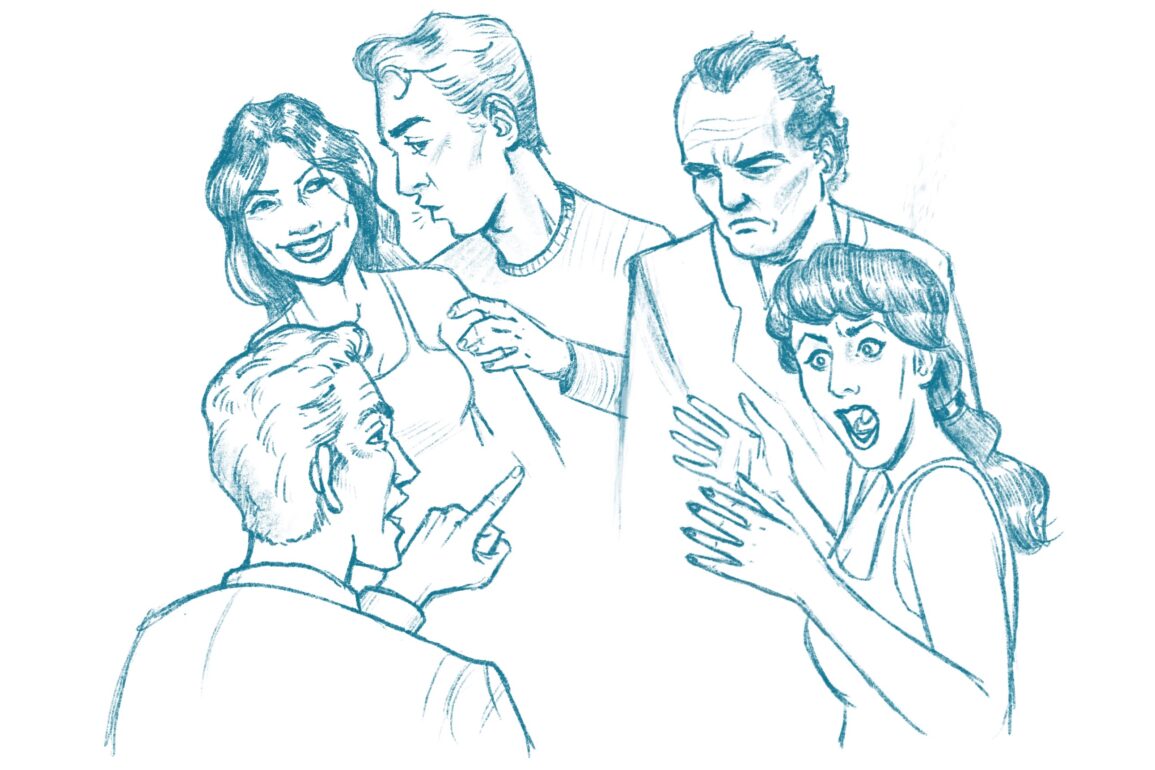If you want to create art that truly connects with the viewer, a crucial component is communication. When we draw characters that are talking to each other, we open up a WORLD of storytelling.
Two characters on a page might just be waiting for the bus, but draw them speaking and you massively increase what you can convey to the viewer.
Maybe they’re arguing or joking, shouting or whispering. Maybe they’re summoning a dragon or calling their lawyer. The sky’s the limit as to what you can depict once a character opens his or her mouth!
In this article we’ll aim to explain the essentials an artist needs to know about drawing speaking characters convincingly. We’ll mainly focus on illustration and comic scenarios, but these principles apply in animation, cartooning, manga and any other medium where a soul has something to say.
The anatomy of the jaw

The first thing is understanding the basic anatomy of the jaw. The jaw moves in a multitude of ways when we talk, and capturing this movement in your drawings helps bring your characters to life.
What frustrates many artists is running out of room on the face to place an open mouth. They might have a beautifully rendered head, but not have enough space between the nose and chin to place a big expressive mouth.
This is because the jaw needs to be considered as a separate form from the skull and placed correctly before any features are drawn.
Remember, it’s a hinge that rotates downward towards the neck. If a big mouth is making your character look like they have a long face, try moving the chin back from the cheeks.
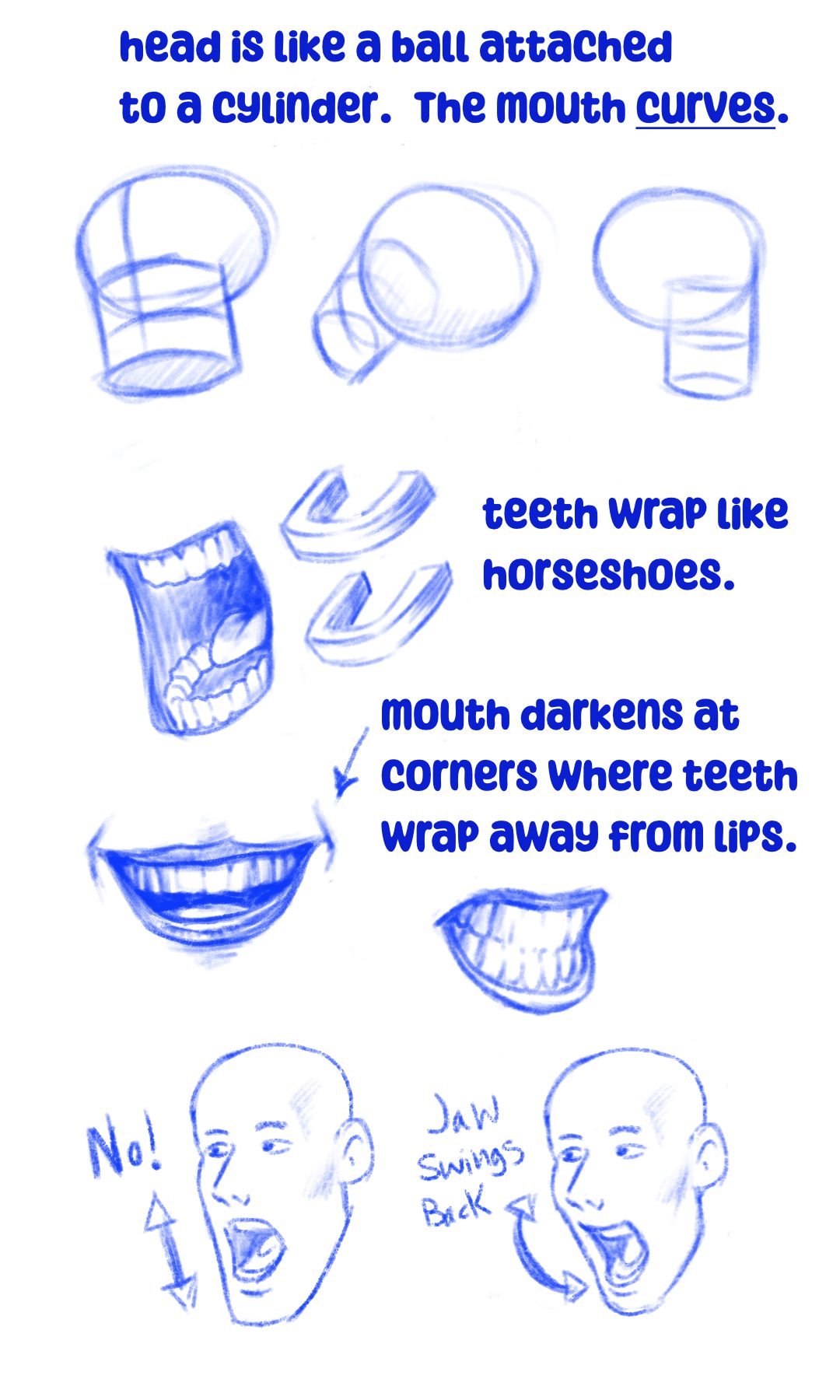
The versatility of the mouth
Our mouths are remarkably expressive and are as much a window into the soul as our eyes. Unlike other facial features, the mouth is almost pure muscle and can flex, stretch and contort more than the eyebrows or nose.
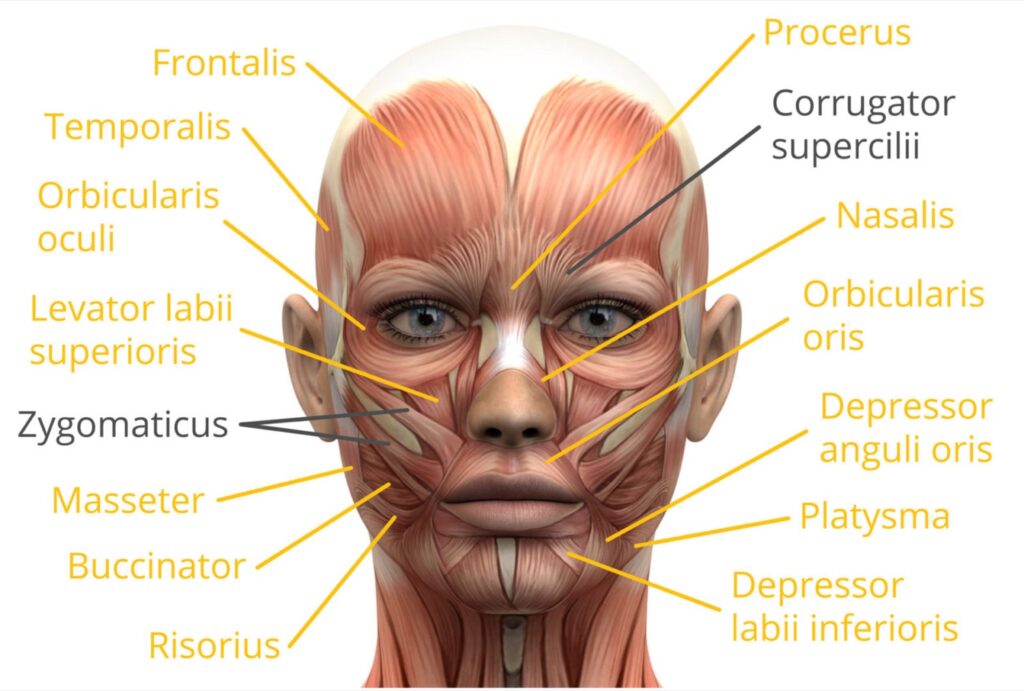
The mouth can even change and distort the eyes as the muscle groups push the cheeks against the lower eyelids. This is a what adds “warmth” to a smile or laugh.
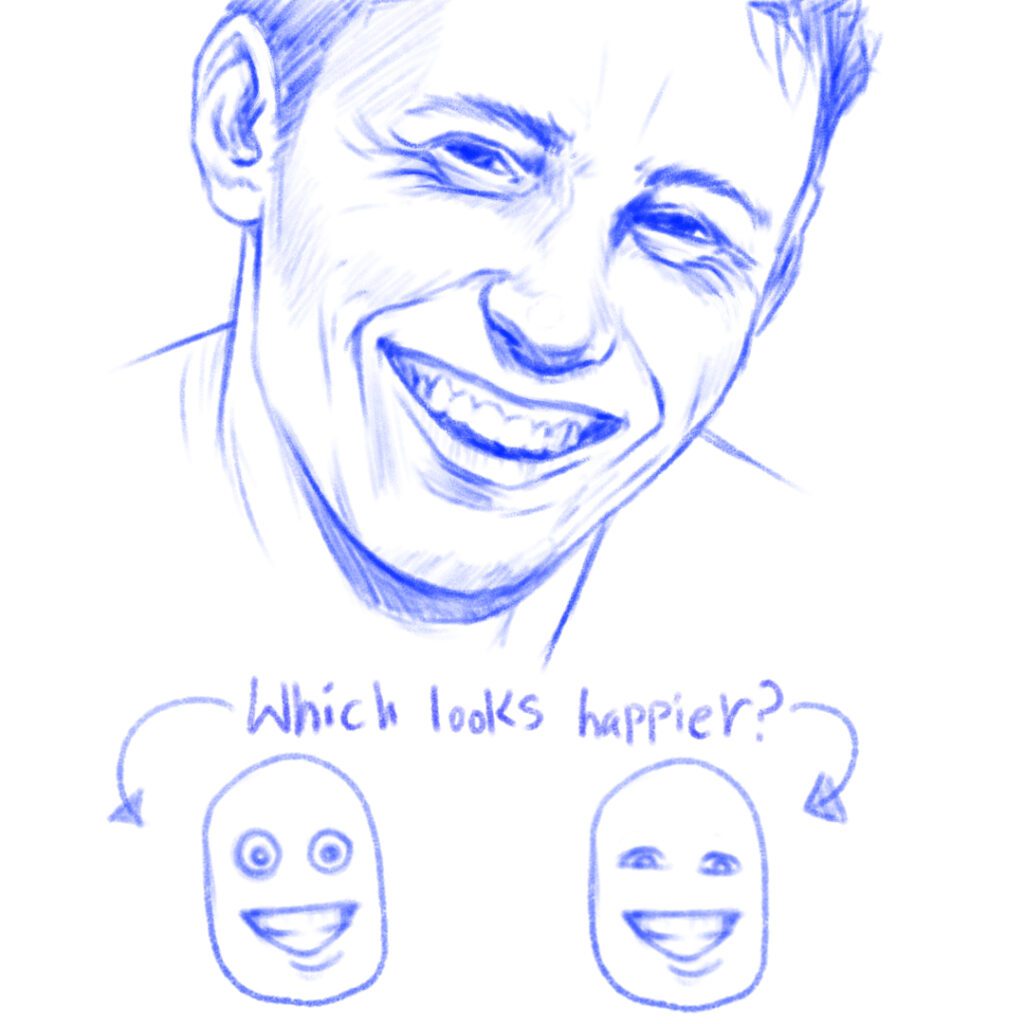
When you’re drawing a character talking, you’ll want to remember there’s almost an exact correlation between how open the mouth is and the volume of the speaker. Shouts, screams, cheers etc. will rely on a wide open mouth, while whispers and murmurs will only have a slightly open mouth.
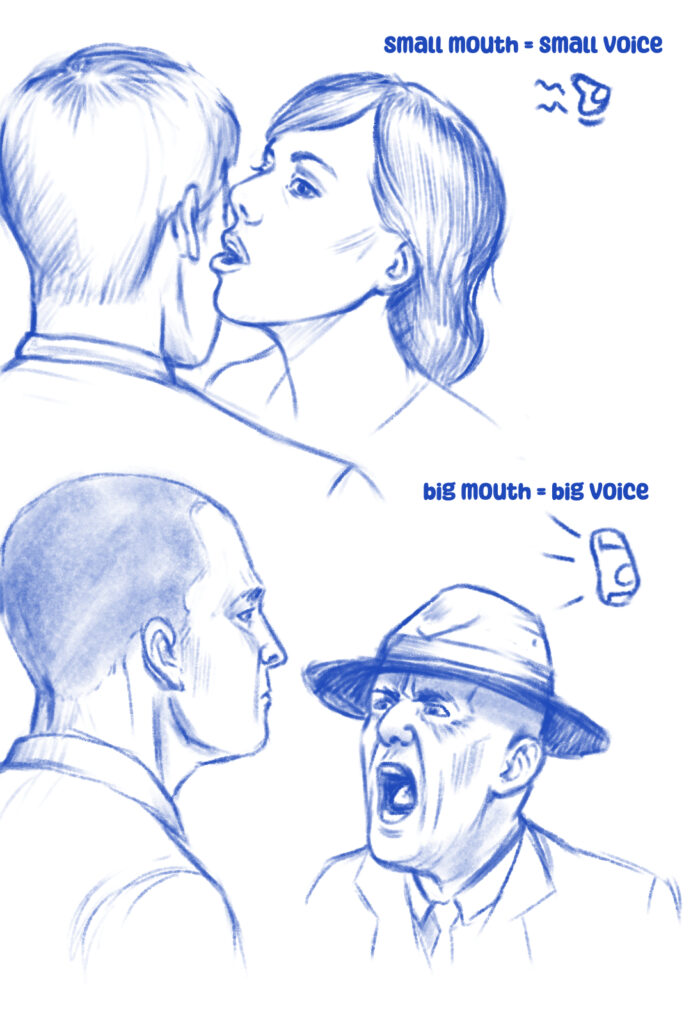
Drawing phonemes
If you need to get across a specific word or sound in a drawing, it’s great to have an understanding of phonemes. Phonemes are essentially the distinct units of sound that make up each word. “O”, “M” and “F” are examples of unique phonemes that each use a very different mouth shape to form.
Animators are masters of phonemes. By combining a series of phoneme shapes together, they can create a smooth animation of any word in any language required. Powerful stuff!
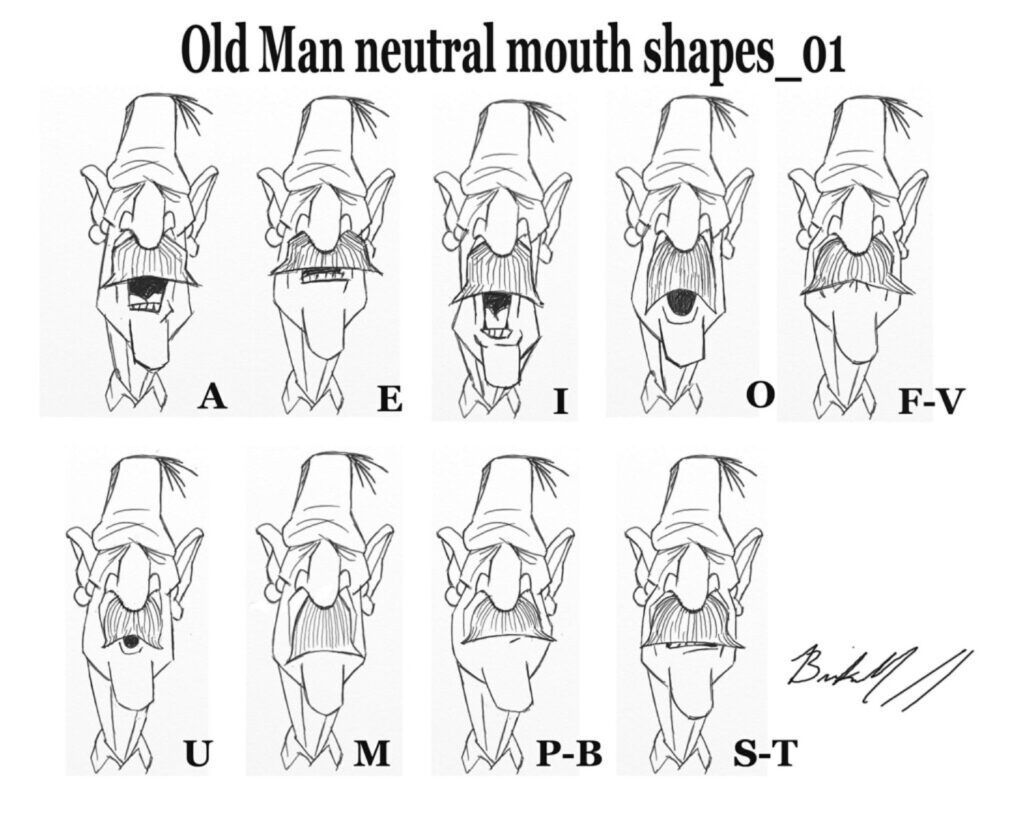
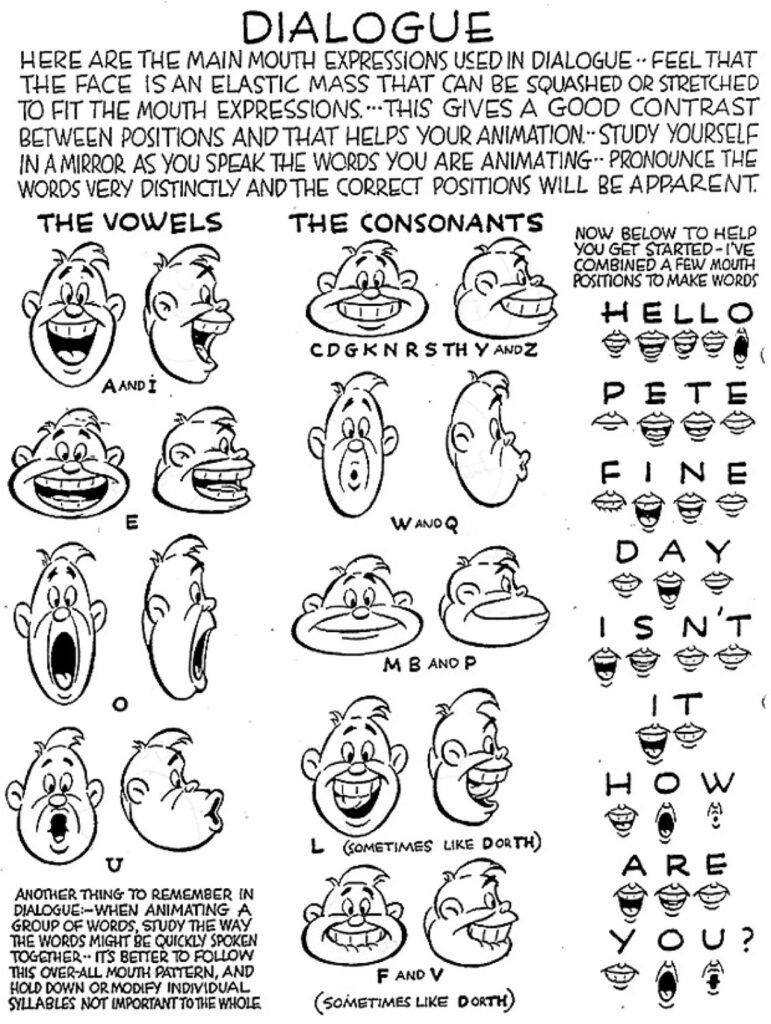
Using body language
Body language is like punctuation – the face might be doing the talking, but the body adds the emphasis. You won’t always be able to show a character’s entire figure, but that doesn’t mean you can’t be extremely expressive with what’s available.
Just the angle of the neck or hunch of the shoulders can convey emotional insights. The direction of the torso should also be considered. When the head and torso are aligned, it signifies confidence and directness. If the body faces away from the face, it looks more meek, secretive or unsure.
You can combine facial expressions and contrasting body language to form truly engaging drawings. A laughing face atop a collapsed, exhausted figure tells a very different story than the face alone.
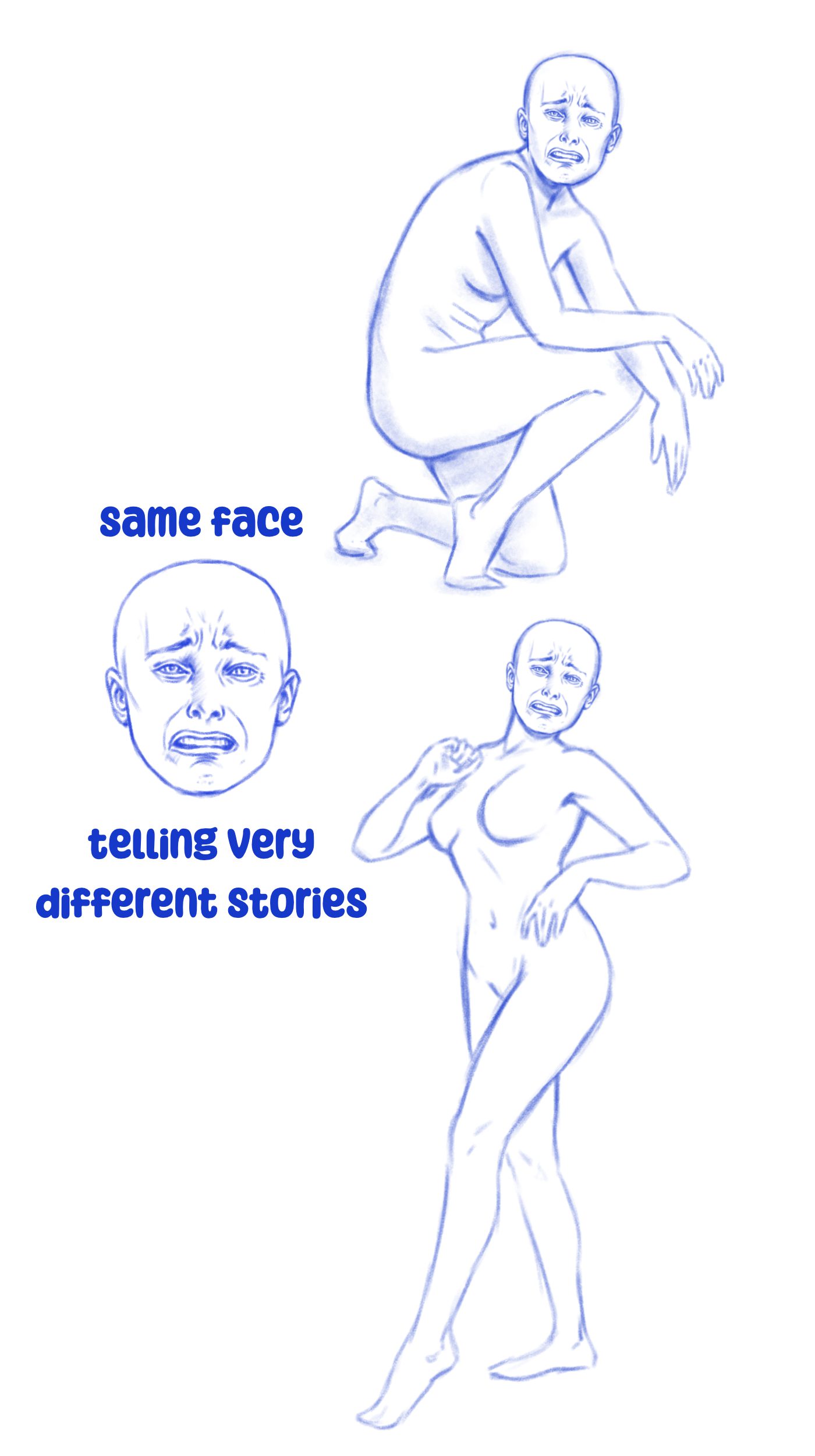
Drawing groups of people
Body language becomes even more important when you’re drawing groups of three or more characters. If multiple figures are facing the same character, you know exactly who’s doing the talking.
Eye contact also plays a strong role in groups. If a crowd is looking away from a speaking character, do they look like they care what he’s saying?
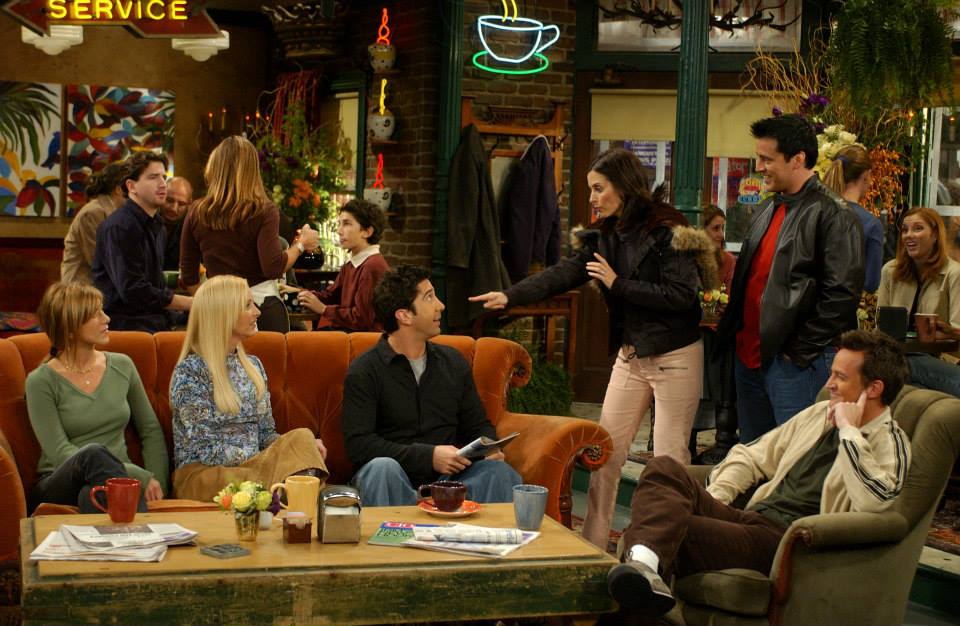
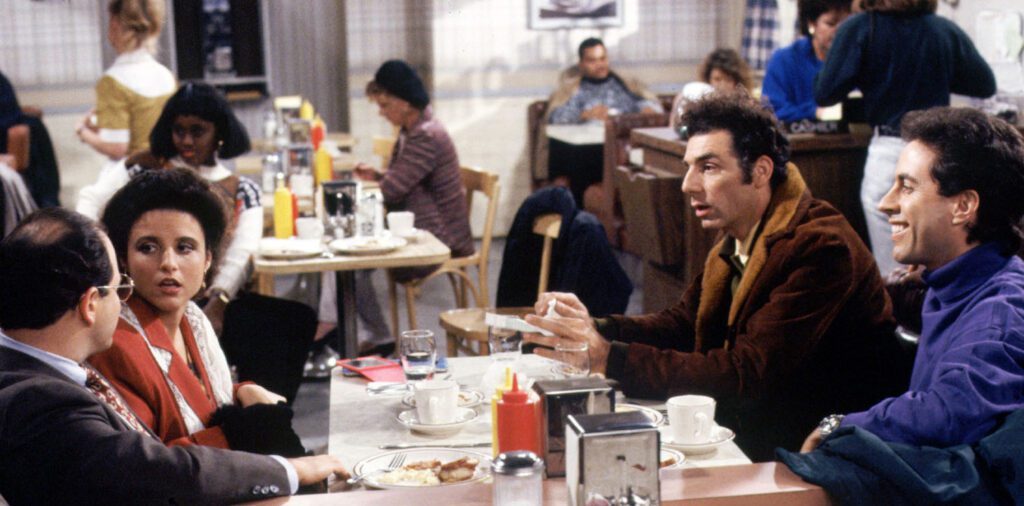
Talking with the hands
While technically a form of body language, the hands are as expressive as any facial feature. Using hands while talking can be a powerful tool to underline or magnify the spoken message.

They can also be a convenient way to convey emotion from a character who isn’t facing the viewer. Hands on the hips express confidence equally from the back or the front, for example.
Hands or fists on the chin can make a character look thoughtful, contemplative or sleepy. Hands around the cheeks or eyes however convey extreme grief, fear or shock.
The direction of the palms also play a key role…
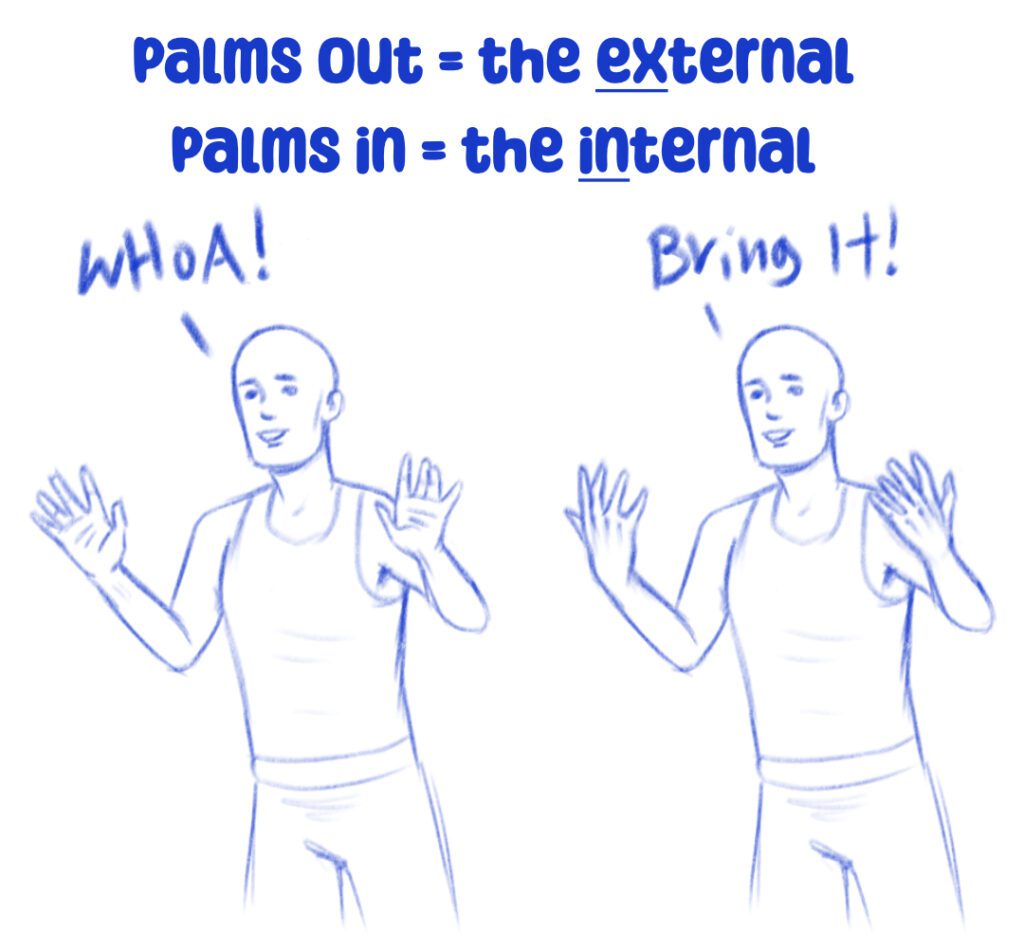
Hands out with palms facing in is a self referential posture – “me personally”, “and then I said” etc.
Palms facing out is a kind of warding gesture – “I don’t want any”, “whoa, let’s slow down”, “not me!” etc.
Study those around you
Drawing characters that look like they’re communicating is an important skill to have as an artist. It lifts them from static objects on a page to living beings with stories to tell.
Hopefully this guide was helpful but if you want to study more, you won’t have to look far!
When you go out watch how people communication with each other and see what impressions you get from them. Did the way they ordered that coffee make them look stressed, joyful or confused?
Can you tell if that couple in the distance is husband and wife, or brother and sister from their body language?
There are always ways to keep learning!

